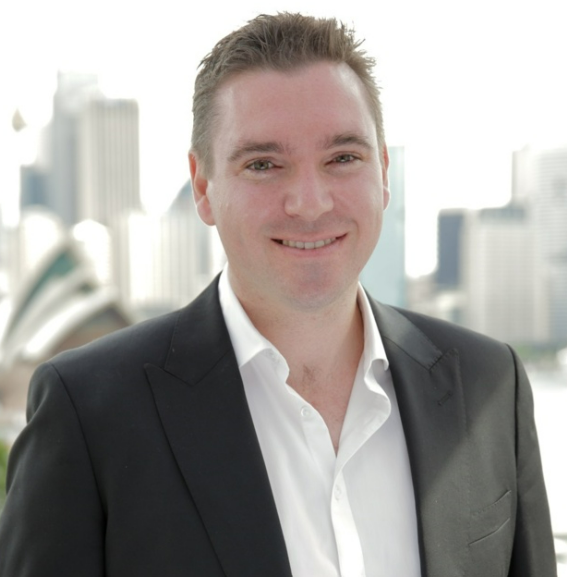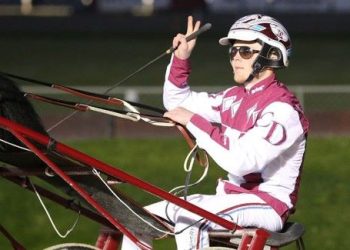“It’s some tough love. I love the (harness racing) industry and I want to make a difference, but I want to make sure that difference is there for the future – this is the intervention that we need right now.”

That’s been the message from Harness Racing Victoria Chief Executive Officer Matt Isaacs in industry-targetted media interviews in the aftermath of last Wednesday’s (August 2) bombshell to Victorian participants.
Isaacs dropped the shock news of a $3.9 million in stakes reduction and a massive $6 million belt-tightening across the board in a statement to industry, and in live interviews since he’s appealed to the industry for understanding, support and buy-in.
“My job is not to be a media performer – my job is to fight for our industry every day and that is what I am trying to do for us all,” Isaacs told Paul Campbell in the Campbell’s Comments harness racing podcast.

“I recognise these decisions are very difficult and impacting heavily on our participants who work very hard to put the show on. I am very sensitive to that, but these decisions are made for the future of harness racing in Victoria,” he said.
Issacs acknowledged he needed to find a way to get closer to the industry and bring the industry closer to the decisions that were being made.
“It’s going to take some time on both sides to put some history aside, put down perceived views of each other and work closely together,” he told Campbell.
“I think I need to do a really strong education process with some of the participants around how the industry works, how the business model works, how it is funded and the challenges and headwinds we have now and some of the future challenges we might have come at us in the not too distant future as well.”
That process will begin this Wednesday (August 9) when Isaacs will meet with industry stakeholder bodies, who publicly bristled and rejected the suggestion in Isaacs’ announcement that they had been consulted about the decisions.
Issacs said it had been made clear to all Victorian Government statutory bodies, not just Harness Racing Victoria, that due to the State’s financial position they needed to find a way to live within their means, and to return to financial independence from Government.
“Part of that is to demonstrate we are prepared to make some changes to our cost base. I will ensure the industry is focussed back on what matters and hyper focussed on cost, to maximise returns to participants,” he said.
“We need to align around racing, which is ultimately the product, ownership and wagering, with a view that returns come back to participants.
“We hope these measures are short term to sustain ourselves and that we can then build the momentum again into the future and start to release money when it becomes available back into things like prizemoney with a reset cost base as well.”
Isaacs said it was critical that the generation of young people entering the sport were given opportunity for a sustainable future.
“We want to make sure there is aspiration in the sport…we need to continue to evolve and innovate around our product and evolve the show we put on collectively so we can engage more participants more punters to generate the financial outcomes that we need.”
Isaacs said it was clear the industry could not “save our way out”.
“We need to become laser focussed on cost, but we need to redirect the right investment into the things that are going to help generate outcomes into the future.”
Isaacs said the industry had landed in a “perfect storm”: a decline in wagering market performance (with the end of COVID); the end of a joint venture arrangement with TAB and the broader economic challenges at play.
He said a new funding mechanism to begin in August next year (following the expiration of the 2012 TAB joint venture arrangement) needed to be resolved in a manner that ensured harness racing its “fair share”.
“The new funding mechanism begins in August next year and…how that is split hasn’t been discussed yet through the codes. But we are the largest bet-on harness racing sport in Australia, and we should be proud that we have a great product and we have really good opportunities ahead to get that right.
“Where you race does make a difference and when you race does make a difference. I am challenging the (HRV) team to look at ways we can do things differently, and schedule differently, look at our race construct, when we are racing etc, to maximise the opportunity for earn for our industry.”
Isaacs said consolidation of tracks was “not part of the conversation” – at the moment.
“We have 28 different racetracks in Victoria and there is a capital infrastructure requirement to keep them safe and maintain them – that is particularly challenging. I was born in Mildura and grew up in Bendigo – I know how important our industry is to regional Victoria.
“Racing here at Melton is 35 percent higher (turnover) than the average across all the other tracks but we have strong returns out of Mildura, Bendigo, Ballarat, Geelong, Shepparton and Cranbourne, so there are some really strong products out there.
“The regional piece is an important part of who we are and I think it can play to our advantage but we also have to balance that with getting the right economic returns through our race programming where we race and when we race.
“I actually think our superpower is the strength that we have in regional Victoria – and the other superpower is our female participants who are actually dominant in our sport. We have some great stories there and we have got to do a better job of telling that.
“We have to find a way to get our industry out to the mainstream – starting with how to get thoroughbred punters into our product, how to get greyhound punters into our product, that is where there is immediate opportunity to grow.
“How do we get into people’s loungeroom or connected on their phone. There are opportunities ahead and we need to narrow our focus on that, because if we can engage our fans, and create a bigger fan base, that’s where we grow our sport.
“We have all got a role to play in this – I am only here as facilitator to help ensure this sport prospers and has a future for people in it now and the next generation coming through. We owe it to the next generation to ensure we work together to ensure there is something there to hand over.”
by Terry Gange, for Harnesslink

 USA
USA Canada
Canada Australia
Australia New Zealand
New Zealand Europe
Europe UK / IRE
UK / IRE



